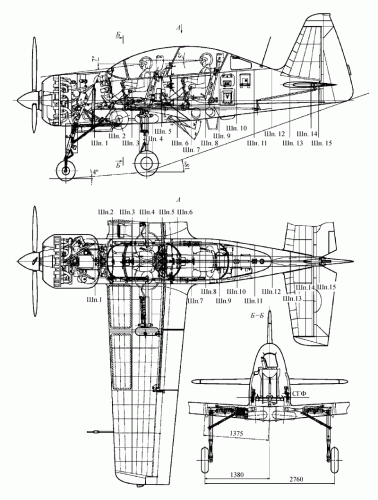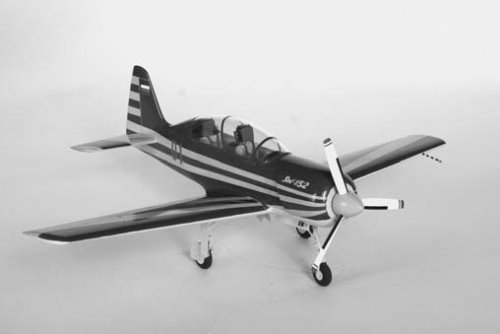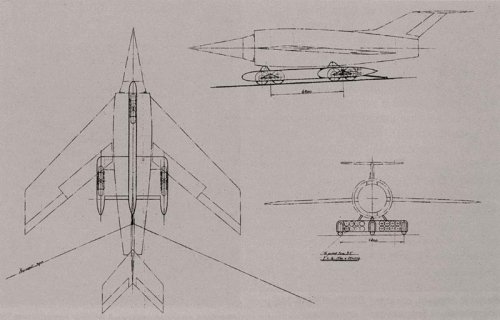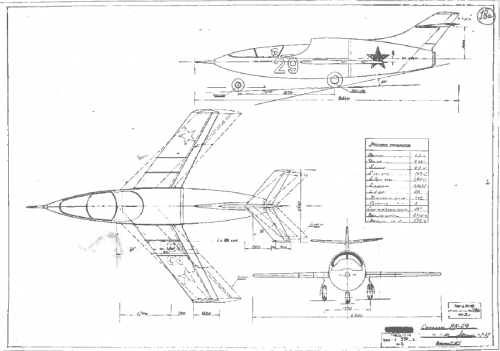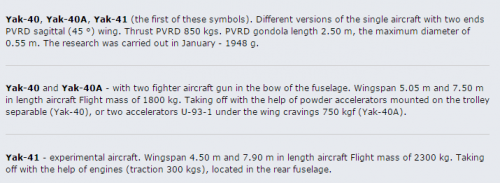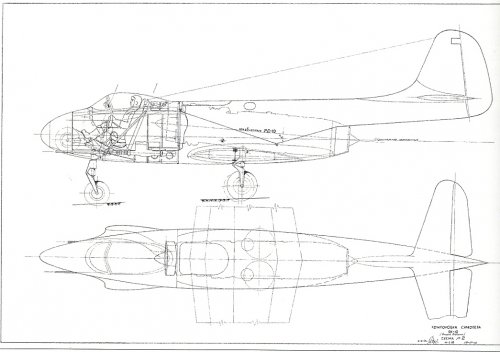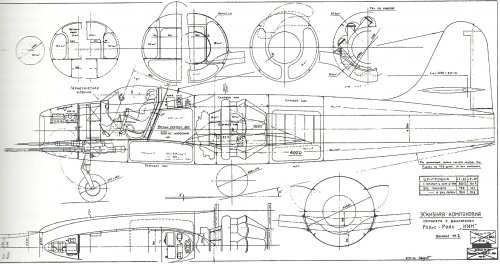Yak-PVRD project
Yak-ramjet
Since the mid 40's in the OKB Yakovlev investigated a large number of schemes jet combat aircraft. Some of them have been implemented in the metal, and the rest can be considered as exploratory, giving answers to certain questions.
The international situation in the years continued to worsen. To counter this, needed a strong defense and supersonic fighter-bombers.
For the design of such an aircraft in the Yakovlev Design Bureau started in late 1947, and only 26 June 1948 L. Schechter presented a draft single-seat fighter-bomber with four ramjet.
Choosing a propulsion system for experimental aircraft was not random, especially at EDO had experience designing and building the Yak-7P, and then the Yak-3RD.
Ramjet - a jet engine, which is continuously fed into the combustion air is compressed by the action of the velocity head. The main advantage of the ramjet is their ability to operate at very high speeds and at higher altitudes than the turbojet, which is determined when the fighter-bomber.
For such engines is characterized by the absence of moving parts, respectively, and the simplicity of design, technology in production and low cost.
However, a significant drawback of the ramjet, which negates all of the benefits is the lack of static thrust and should be forced to start. Yes, and at subsonic speeds these engines were extremely uneconomical.
The project envisaged Yucca with liquid ramjet boosters hanging under swept (45 degrees) wing.
Under the scheme of the plane is a single vysokoplan with four engines and bike chassis, which was followed by the classic series of Yak-25 - Yak-28.
Wingspan was 14.20 m, wing area - 59 m2, the length of the plane 19.82 m span horizontal tail 4, 0 m, track chassis between supporting pillars - 6, 4 pm
Considered options fighter, fighter-bomber and reconnaissance aircraft. Speed performance and massive data known.
Project was not implemented due to complexity with engines.
Sorry for Google translation


